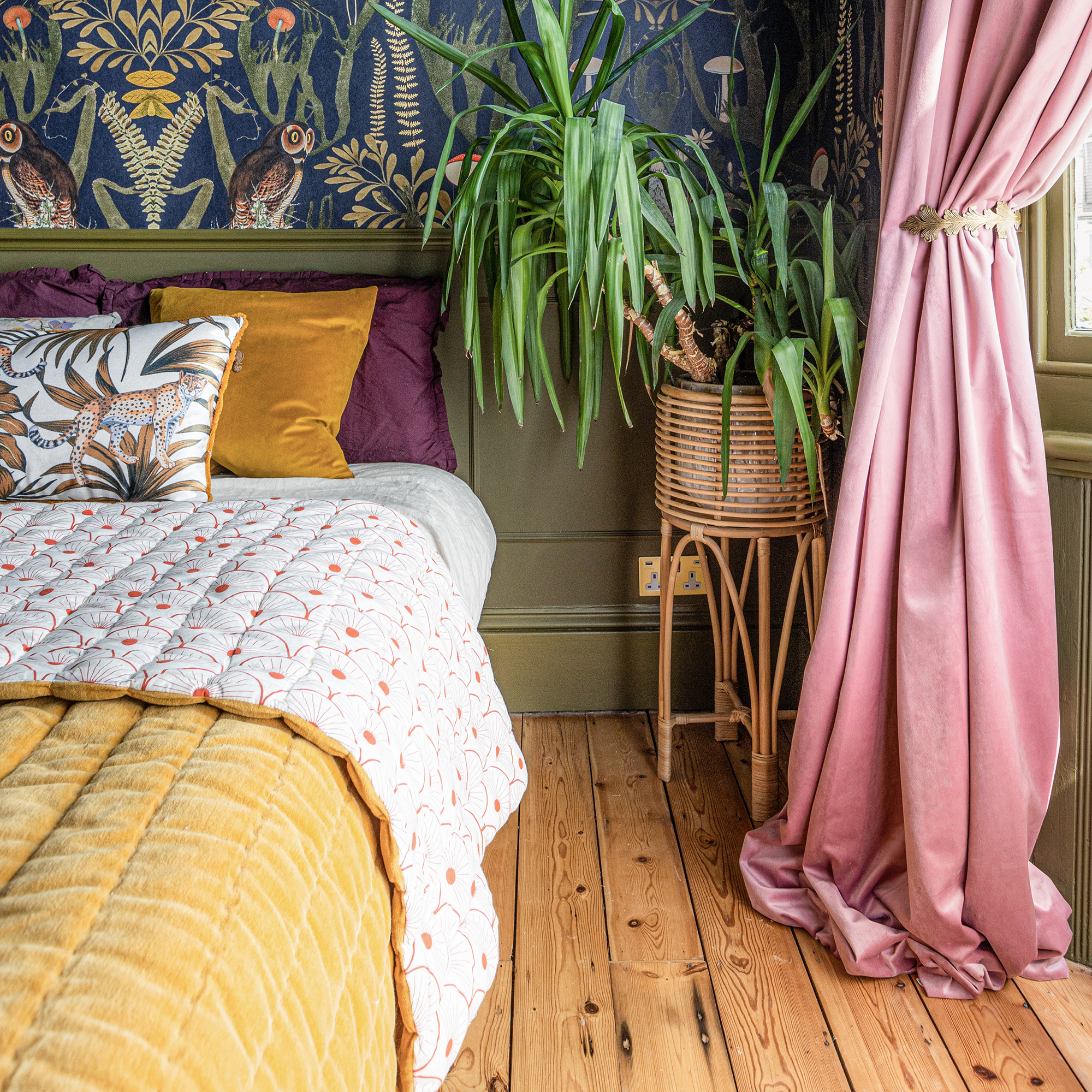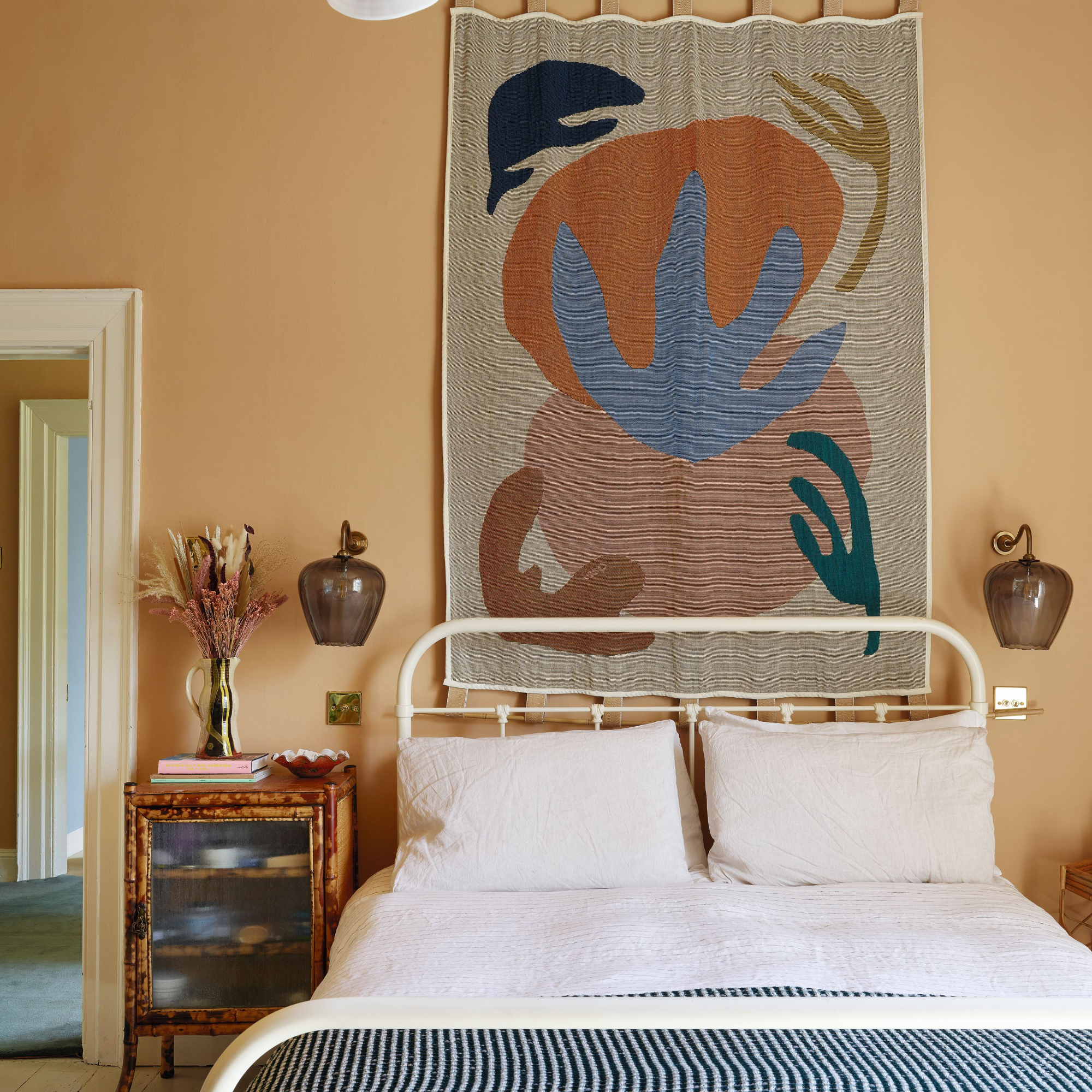How to soundproof a bedroom – five easy and affordable fixes for a quiet night's sleep
These expert hacks seal out noise so you can fall asleep fast



Learning how to soundproof a bedroom can often be essential if you live near a busy main road, or in a city centre. You can't always control the noise outside, but fortunately, you can control how much gets into your bedroom when you're trying to sleep.
Soundproofing your bedroom works in two ways – it can stop you from being disturbed by noises from outside your home (including noisy neighbours), and it can also prevent sounds from inside your home from travelling through the floors and windows to disturb your slumber.
Whether it's adding in some smart bedroom curtain ideas to deaden the noise, or you need a more hardy solution such as sound-proofing panels. We've rounded up some expert tips to help you sleep better.
How to soundproof a bedroom
We spoke to soundproofing experts, as well as interior designers, for their tips on how you can adjust your bedroom ideas so that you're able to get a quiet night's sleep.
1. Stop street sounds disturbing you

Double and triple glazing are your ultimate weapon when it comes to stopping sounds travelling from outside to disrupt your sleep patterns. But you don't need to install new windows to reduce noise floating into your bedroom, sometimes simply learning how to draught-proof windows can do the trick.
'Sound can enter your home through small gaps and cracks in windows, doors and walls. What's more, these gaps are a primary cause of heat loss in homes. By sealing these openings, you can create a warmer and quieter environment,' explains Grant Fraser, director of London SoundProofing.
'Don’t overlook the areas around pipes and wires that enter the house, and use high-quality caulk or weatherstripping to seal them,' Grant continues.
Sign up to our newsletter for style inspiration, real homes, project and garden advice and shopping know-how
2. Add noise-reducing window treatments

The bedroom curtains and bedroom blind ideas you choose can be key in soundproofing your sleep space. 'If you are lucky and have deep window reveals, shutters can be an excellent place to start,' suggests interior designer Lucinda Griffith, founder of Lucinda Griffith Design Consultancy.
'For the best noise reduction, choose curtains over blinds, and always include a good interlining. Ideally, you should also make them full length as that will certainly help to muffle sound.'

Lucinda has worked in the interior design industry for more than 20 years. She set up her design consultancy in 2006 to provide accessible and affordable advice to help people tailor their house to their needs, taste and style.
3. Add acoustic panels to absorb sound

There are lots of bedroom wall panelling ideas that can provide an additional soundproof layer to create a quiet sanctuary for you to sleep in. This might be a classic tongue-and-groove design that covers walls and ceilings for a cabin-style room, traditional wood panels below a dado rail, or contemporary geometric panels that add a graphic design element to your bedroom decor. You can layer sound-absorbing foam panels behind your decor panelling for extra 'ssshh' factor.
For a professional approach to soundproof panelling, interior designer and design psychology coach Rebecca West, recommends acoustic wooden wall panels. The Quiet Mark-certified WoodUpp Akupanel is an acoustic wooden slat wall panel that adds serious style credentials to any space.
4. Take a quiet approach to flooring

Most of us prefer to have softer bedroom flooring, whether that's a carpet or soft rugs underfoot. But the benefits go beyond keeping bare feet feeling cosy. 'Soft flooring makes a difference as it helps the acoustics,' explains interior designer Lucinda Griffith. 'If wall-to-wall carpet is not an option, then rugs will help (although not nearly as effectively as carpet will).'
Don't hold back when it comes to bedroom rug ideas. Layering them, laying a large rug beneath the bed, or choosing thickly textured, dense rugs, will all help to stop floors echoing as you walk over them, and stop sounds transmitting through the floor from the room below.
5. Block out sound with a solid door

All doors are not created equal. While they may look very similar, there's a big difference between a solid wooden door and one that's simply constructed from two thin panels with not much in between. The solid version will cost more, but the expense may be worth it to get a decent night's rest.
'A solid door on the bedroom, rather than a hollow one, can stop noise creeping in from elsewhere in the house,' confirms Lucinda Griffith.
Watch out for gaps beneath the door and around the door frame, and even cracks in the panelling of older doors. It is important to know how to draught-proof doors to prevent not only sound from seeping into your bedroom but also heat from escaping.
'Caulking not only reduces noise levels but can help decrease your energy bill by preventing air leaks,' explains Grant Fraser from London SoundProofing. 'Caulking is a fairly easy DIY task and can provide an extra layer of insulation along the edges of your doors and windows. Using weatherstripping or a door sweep to seal the bottom gap, will help prevent noise and cold air from seeping in and warm air from escaping.'
FAQs
How do I soundproof my room cheaply?
The answer to this is very dependent on where the noise is coming through into your bedroom and how bad it is. If it's coming through the gaps in your windows this is the cheapest option as you can pick up weather-proofing strips and even secondary glazing film from Robert Dyas for under £20. However, if that isn't the case your next best option is to look into soundproofing curtains which you can pick up for as little as £25 on Amazon.
If you need an instant fix to soundproof your bedroom today, there is also the option to not spend any money at all and see if relocating a rug into your bedroom and bookshelves to help absorb the sound will help.

Andrea began her journalism career at Ideal Home and is currently Editor of our sister title, Country Homes & Interiors, which celebrates modern country style. Andrea is passionate about colour and how it can transform both our homes and our sense of wellbeing, and has completed The Power of Colour course with the prestigious KLC School of Design. Andrea's career spans interiors magazines, women's lifestyle titles and newspapers. After her first job at Ideal Home, she moved on to women's magazines, Options and Frank. From there it was on to the launch of Red magazine, where she stayed for 10 years and became Assistant Editor. She then shifted into freelancing, and spent 14 years writing for everyone from The Telegraph to The Sunday Times, Livingetc, Stylist and Woman & Home. She was then offered the job as Editor of Country Homes & Interiors, and now combines that role with writing for idealhome.co.uk.